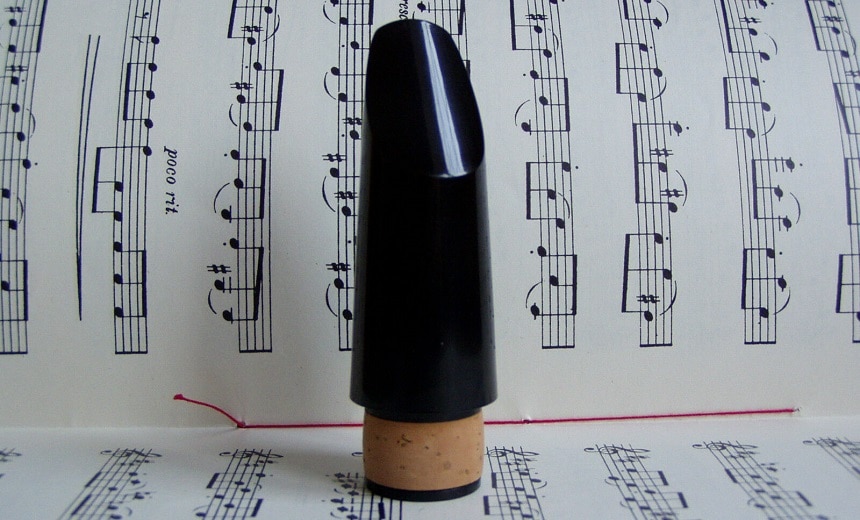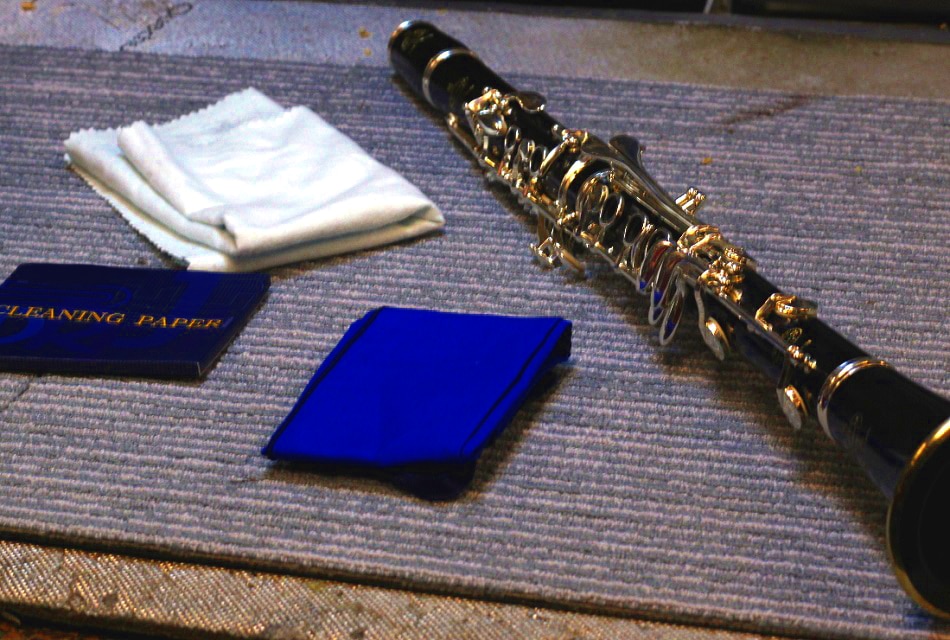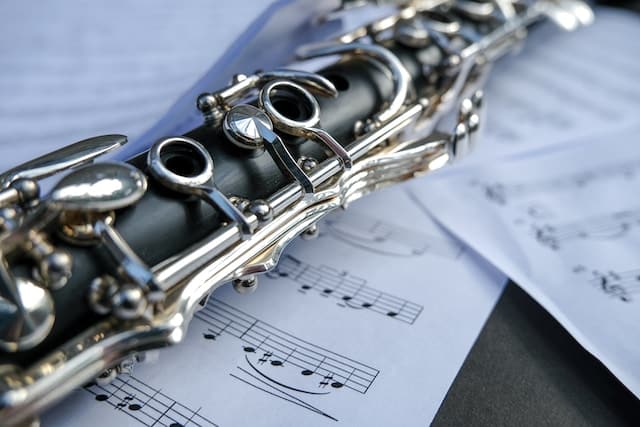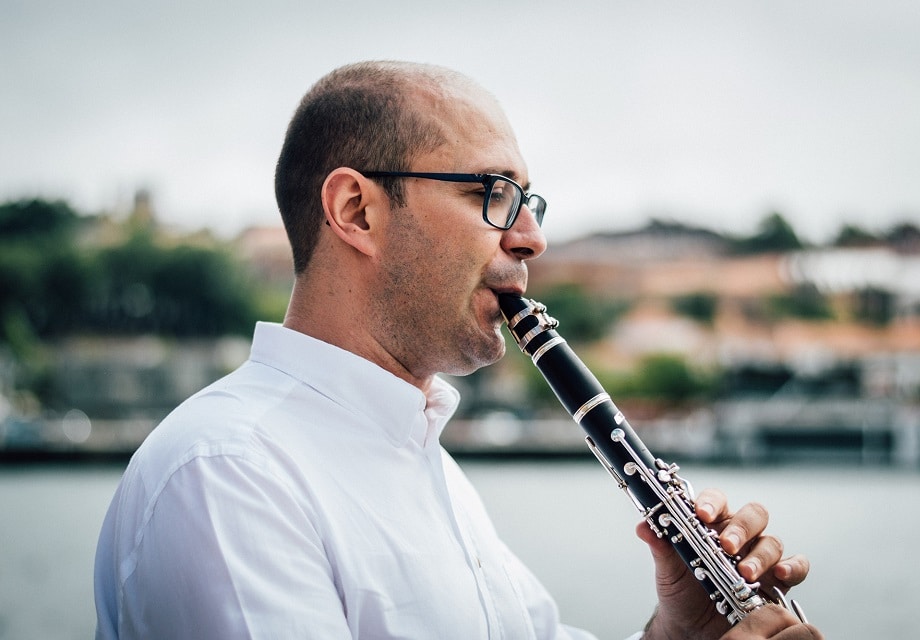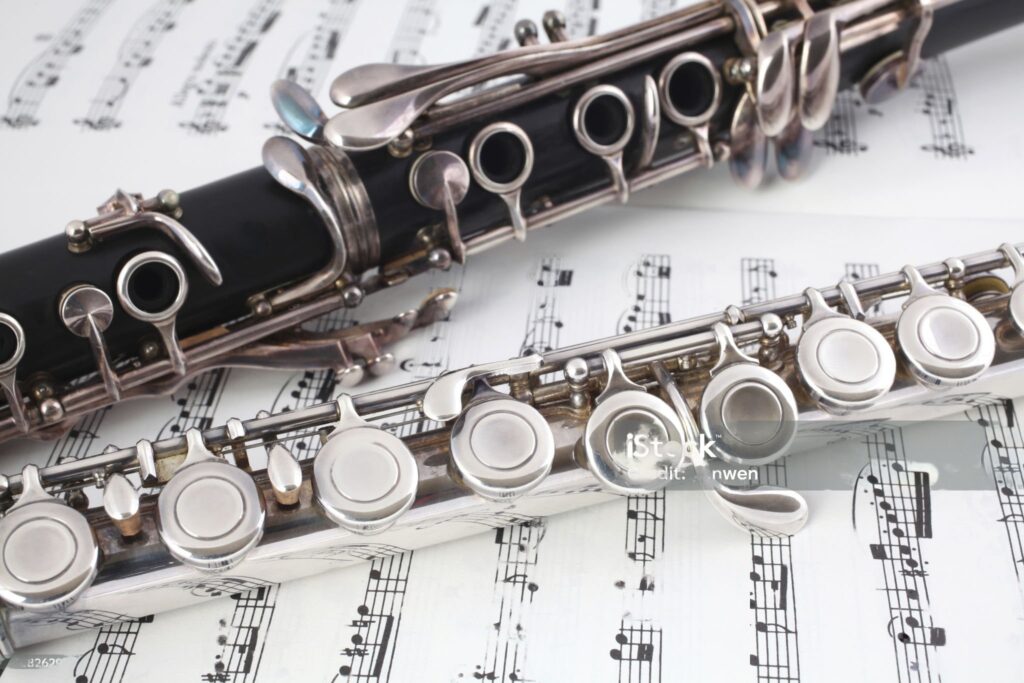Clarinet and oboe might look pretty similar, but they are not. Both instruments belong to the woodwind instrument family. In this guide, we will have a close look at each of these aspects where these two instruments differentiate from one another.
A clarinet features a bore that is cylindrical with a single reed. On the other hand, an oboe has a conical bore with a double reed. Therefore, a clarinet is arguably simpler to learn than an oboe.
But let’s get into the details and see what other differences both these instruments have that make them unique. So carry on reading till the end!
Comparison Table – Oboe vs. Clarinet
| Clarinet | Oboe | |
| Overview | Belongs to the woodwind family, has a reverse/cylindrical bore, and only uses a single reed. | It uses a double reed and belongs to the woodwind family, while its bore is conical. |
| Ease in learning | You can learn it in a few months with extensive practice for mastering airflow and timbre. | Slightly difficult and needs more regular practice along with a competent teacher. |
| History | The predecessor of a clarinet is called the hornpipe, which is also known as albouge or alboka. And Hyacinthe Klose made further changes to this instrument as we see it today. | It doesn’t have certain origins, but it was found in French courts back in the mid-17th Century. |
| Sound | A distinct timbre that differs from one musician to another but is generally dark, round, and mellow. | It has a penetrating sound that you can amplify with its conical bore and a brighter sound (preferred by some). |
| Size | 27.5-inch (Bb) | 26-inch (C) |
| Clef | Treble | Treble |
| Usage | Chamber music, classical music, folk music, concert bands, movie scores, marching bands, Latin jazz, choro, country music, pop music, Cuban rock, orchestras, and solos. | Classical music, baroque music, conventional concert bands, Celtic, romantic music, folk music, chamber music, orchestras, and solos. |
| Types | Piccolo clarinet, soprano clarinet, bass clarinet, sopranino clarinet, basset horn, alto clarinet, basset clarinet, contra-alto clarinet, and contrabass clarinet. | English horn, bass oboe, piccolo oboe, baroque oboe, and oboe D’Amore. |
| Range | It has the largest range in the entire woodwind family. | It has a relatively restricted range as compared to clarinet. |
| Price | $125 to $9000 | $390 to $10000 |
| Style of playing | Romantic, folk, classical, and jazz | Baroque and classical |
What’s an Oboe?
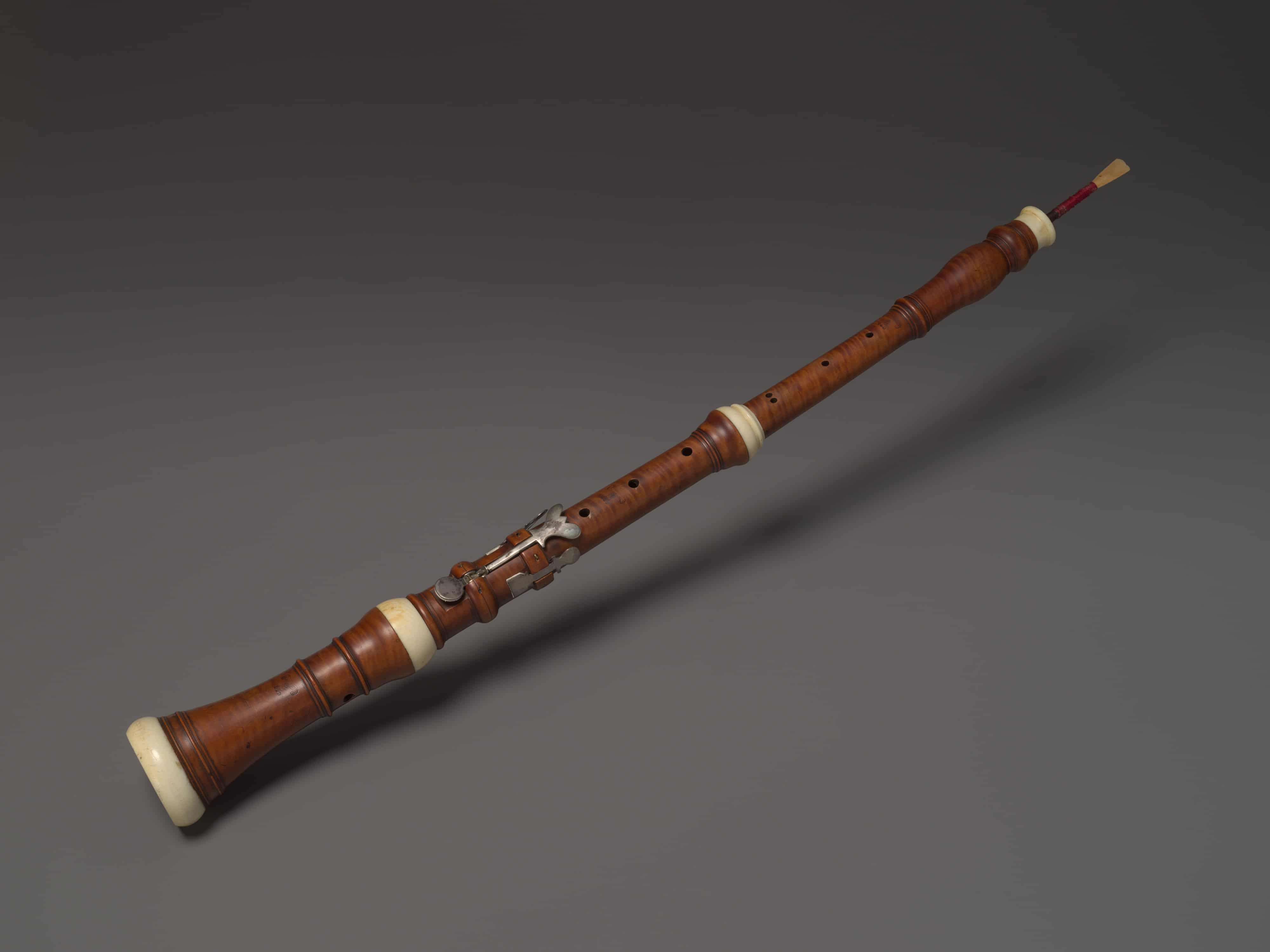 Oboe is a woodwind instrument that comes with a
double reed
Trusted Source
Double reed - Wikipedia
A double reed is a type of reed used to produce sound in various wind instruments. In contrast with a single reed instrument, where the instrument is played by channeling air against one piece of cane which vibrates against the mouthpiece and creates a sound, a double reed features two pieces of cane vibrating against each other.
en.wikipedia.org
. There are four different components that you can confidently identify on this musical instrument.
Oboe is a woodwind instrument that comes with a
double reed
Trusted Source
Double reed - Wikipedia
A double reed is a type of reed used to produce sound in various wind instruments. In contrast with a single reed instrument, where the instrument is played by channeling air against one piece of cane which vibrates against the mouthpiece and creates a sound, a double reed features two pieces of cane vibrating against each other.
en.wikipedia.org
. There are four different components that you can confidently identify on this musical instrument.
It features a bell, a lower joint, an upper joint, and the reed. It also has a conical bore, and its diameter increases from start to end. Therefore, its shape plays a significant role in how clear it sounds and how penetrating the tone is. It means that it can be slightly overhead if you compare it with other instruments.
A person who plays this instrument is called an oboist. It produces sound when you blow air right through its double reed located at the upper end of this instrument.
The air flows and forces the reeds to start vibrating, and this produces sound. This instrument is commonly played in treble or soprano range. The bass oboe is one octave lower than a regular oboe.
This musical instrument is used commonly in chamber music, orchestras, concert bands, and film scores. Typical orchestras have around 2 to 3 oboes, and some of the most famous oboists are Mozart, Strauss, Weber as well as Bach, and Handel.
What’s a Clarinet?
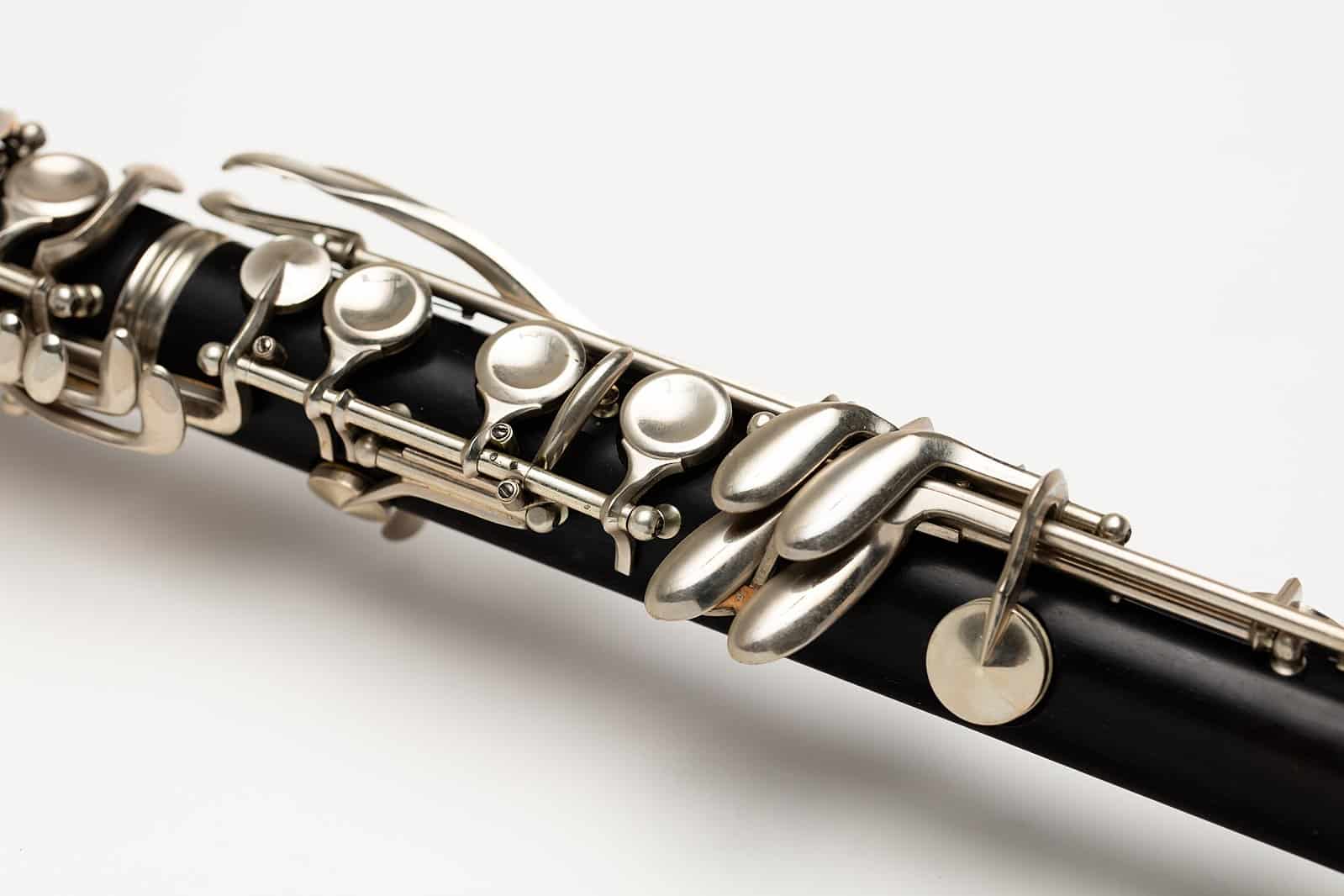 Clarinets are also woodwind instruments, but they have a single reed that is attached to a mouthpiece. You blow through the mouthpiece and make the reed vibrate, which results in sound.
Clarinets are also woodwind instruments, but they have a single reed that is attached to a mouthpiece. You blow through the mouthpiece and make the reed vibrate, which results in sound.
The body of this musical instrument is pretty much similar to a cylindrical tube that has holes in it. A clarinetist is an individual who plays this musical instrument, and s/he should cover the holes with their fingers to price different sounds or tones.
It has a cylindrical bore, and it allows its diameter to remain almost consistent from the top to the bottom. With this shape, these musical instruments have a brighter tone.
These musical instruments are pretty bright, and for that, they work pretty well in concert bands, orchestras, and military brands. You will also find them in most marching bands or even jazz bands.
Any modern orchestra symphony has at least two clarinets, and these include a standard B flat clarinet along with a large A clarinet. All clarinets are transposing instruments Trusted Source transposing musical instrument | Britannica transposing musical instrument, an instrument that produces a higher or lower pitch than indicated in music written for it. Examples include clarinets, the English horn, and saxophones. Musical notation written for transposing instruments shows the relative pitches, rather than the exact pitches, produced. Writing in this manner is a historical convention that often allows players to switch from a given instrument to a related one without relearning fingerings and other techniques (as from E♭ clarinet to B♭ clarinet or from English horn to oboe). www.britannica.com , so you won’t find any difference between the sound that comes out of the clarinet and the sheet music.
Oboe vs. Clarinet – Similarities
Before we get into details associated with the differences between these two instruments, let’s talk about some of the similarities that they both have.
- Both these instruments are categorized into a woodwind category, and they also look pretty much similar. It also means they both work on a similar principle, and you have to blow air into their embouchure through your mouth and change the tones or sounds using the keys with the help of your fingers.
- Both can work as soloists in an instrumental group and in an orchestra.
- Oboe and clarinet are both expensive instruments, and they are capable of a melody that stands out. But it also can blend in with other instruments and their sounds.
- They are both highly versatile and can be pretty agile with short or fast notes simultaneously. They can also sustain expressive and long notes too.
Evolution & History
Based on historical accounts, clarinets were developed as a single-reed musical instrument. And back in the day, it was called albogue or alboka. But the modern clarinet was built from an instrument of the past which was named the chalumeau.
A breakthrough occurred in developing the modern clarinet in 1812 when Iwan Muller, a Clarinetist from Russia, made the modern pad that was cloaked in fish bladder or leather.
With this innovation, many players of these instruments significantly improved their music. Later on, Hyacinthe Klose Trusted Source Klose, Hyacinthe-Eléonore | Encyclopedia.com With the instrument maker Louis-Auguste Buffet, he developed a clarinet utilizing the ring-key system of the Boehm flute, which was first shown in 1839 and patented in 1844. He publ. Grande méthode pour la clarinette à anneaux mobiles (1844) based on that system. Source for information on Klose, Hyacinthe-Eléonore: Baker’s Biographical Dictionary of Musicians dictionary. www.encyclopedia.com also introduced some more features we see today in clarinets.
The history of the clarinet is much more evident, but the same can’t be said for the oboe. No one really knows when this musical instrument was first developed. It has been traced back to the mid-17th Century in France by historians. This was an instrument that was developed with boxwood, and it features 3 keys.
Over time, more and more keys were added, including the likes of F and G7, and it also got thinner in size. The modern oboe is developed using African Blackwood, while some companies use cocobolo and rosewood to make the oboe.
Appearance
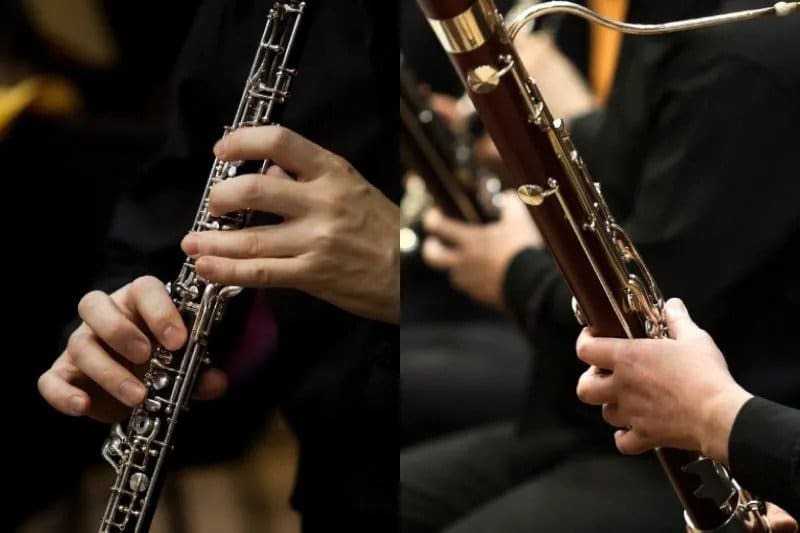 Oboe and clarinet might look pretty similar to one another, but they have multiple differences. Both these instruments come with a bell and lower and upper joints. But the oboe also features a staple, and the clarinet features a mouthpiece and a barrel.
Oboe and clarinet might look pretty similar to one another, but they have multiple differences. Both these instruments come with a bell and lower and upper joints. But the oboe also features a staple, and the clarinet features a mouthpiece and a barrel.
The oboe features a couple of reeds along with a conical bore, while the clarinet only has a single reed along with a cylindrical bore. Oboe’s bell is rounded while the clarinet’s bell is flared.
Most of these oboes also feature tone holes that are closed. In contrast, clarinets have open tone holes. Both these instruments also differ in size as the oboe measures to be 26 inches in length while a clarinet is 27.5 inches in length.
The Sound
Another major difference that is there between these two instruments is how they both sound. Oboes produce penetrative, bright, and rich sounds, with clear tones. At the same time, clarinets generate round, dark, mellow sounds with low-range tones. The unique timbre of a clarinet varies with the height of the tone.
The bright tone of oboes is often credited to its conical bore. And when it comes to the different uses of this instrument, it is primarily used in various genres, such as jazz, as it can produce a wide range of tones as well as softer tones.
The Reed
You might have already determined that there are multiple differences between these two musical instruments. But the most significant difference between them is the reed. It is clearly evident just by the looks that a clarinet comes with a single reed positioned right on the mouthpiece and is in place of ligature.
On the other hand, the oboe comes with a double reed, which is positioned alongside one another to produce sound. This difference between the reeds in both these instruments allows them to produce a wide variety of sounds and how a player can play them.
Usage
The clarinet is a musical instrument that a wide range of musicians accepted. Therefore, this device is found in most orchestral groups playing concert bands, classical music, jazz, pop, and rock.
On the other hand, oboes are frequently used in classical music. But you can also use it in folk music and film music. But both musical instruments are suitable for a range of different purposes.
Ease of Learning
The clarinet is much easier to learn as compared to the oboe. You can easily learn the basics of this musical instrument within a few months if you practice it consistently. Nevertheless, mastering this airflow using this instrument and its dark timbre needs more effort and training over time.
On the other hand, the oboe is far more challenging when it comes to learning. If you compare it with clarinet, you will need more continuous practice, and you will also need a reliable and experienced teacher who knows how to play and teach this musical instrument.
Types
Different types of clarinets are frequently used for a range of different occasions in combination with various other instruments. For instance, a piccolo clarinet is rare and frequently used solely in Italian military bands.
On the other hand, the Sopranino clarinet is regularly used by various bands in different concerts. The soprano clarinet features different keys, such as A and C. It is the most commonly used type of this musical instrument. There are other types of this clarinet as well, including the likes of alto clarinet, bass clarinet, and basset clarinet.
On the other hand, there are only a few types of oboe, and the most common ones are Oboe D’amore and Cor Anglais. The latter comes with an F pitch, and the prior one comes with an A pitch. There is a third type as well, called the bass oboe; it has one octave sound much lower than most octaves generally there are in oboes.
Cost Comparison
A quality student clarinet will cost around $200 to $400. But you can go for cheaper alternatives as well, and they won’t cost you more than $100.
If you are an intermediate player, then a clarinet that is around $750 in price will work pretty well for you. Being a professional, your clarinet will cost way more than $1,000.
But an oboe is a much more expensive musical atonement as compared to a clarinet. A basic oboe will come with a price tag of $900 on it.
You can go for some cheaper alternatives that will cost around $400. However, professionals who use oboes tend to cost more than $8,000 if you are looking for a good quality option.
Availability of Experts
The experts available for each of these instruments also have a significant role to play. The excerpts of these instruments are the people who teach these lessons and share their knowledge with the one who is learning.
The clarinet is pretty popular than the oboe, and this is because there are more clarinet players. If you have a look at a band, you will see around 8 to 12 clarinetists in a single band. Usually, there are only 2 to 3 oboists.
You can easily find experts who can play clarinet for these particular reasons. People who play a particular musical instrument are more than people who play the oboe. You won’t find many experts in oboe for taking these lessons. Therefore, you might have to drive a long distance to find an expert and learn the instrument.
Embouchure
The embouchure in a clarinet has a much larger room for the air that you blow in it as compared to the embouchure of an oboe. As the embouchure on the clarinet is for a single-reed instrument, it is lower covers the lower teeth to avoid any damage to the reed.
The embouchure on the oboe limits the air that you blow into its tiny space. Both top and bottom lips should be covering the teeth that surround the double reed. Therefore, you can imagine that the embouchure that is there on an oboe is very tiring for the lips.
Maintenance
The maintenance of an oboe can be much more complicated as it is a delicate instrument, and you have to take care of its precision. You will have to know a lot about this instrument when it comes to adjusting it correctly.
This is similar to those who teach oboe because there are few experts on this particular musical instrument available. You will have to take your oboe to a specialist because they will know exactly what they are doing with the musical instrument.
Oboes are also much more experienced, so taking it to some random guy might cost you a fortune if you don’t get the results that you expect from it.
On the other hand, a clarinet is a musical instrument that can be fixed at your local music store. But a better option is to get your instrument fixed by an expert who knows and understands these instruments from the inside out.
Role in Ensemble
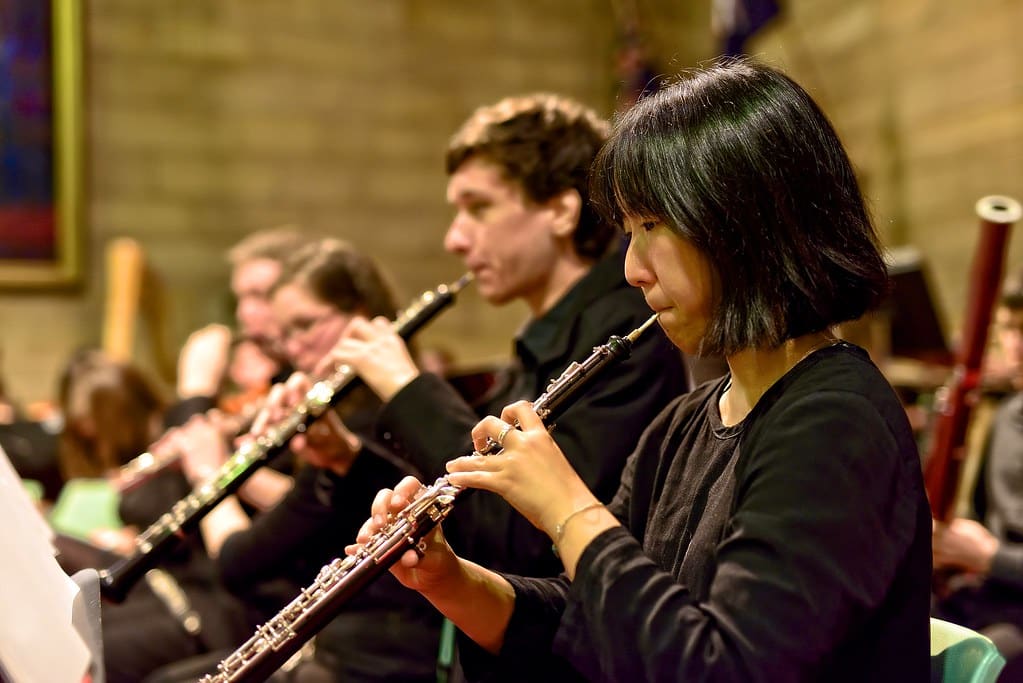 Clarinets have a dynamic range, which is why they are suitable for larger groups as they pair well with other instruments and settings. You need to think about those strings in the orchestra and how they set everything up for the quieter parts within the music or the soloistic section to make an appearance.
Clarinets have a dynamic range, which is why they are suitable for larger groups as they pair well with other instruments and settings. You need to think about those strings in the orchestra and how they set everything up for the quieter parts within the music or the soloistic section to make an appearance.
This musical instrument is set to make the scene in wind band literature. Clarinets are also pretty challenging when it comes to technical playing. This instrument gets pretty difficult with upper lines that make your pieces brighter and sparkle.
Clarinets get a pretty good opportunity to shine. It has a wide 3+ octave range that allows composers to utilize this instrument in different ways. The mellow sound that it blends well with various other instruments and can add a lot of interesting texture to your piece.
On the other hand, oboes are pretty colorful as they have a very expressive tone, making them extremely popular for soloistic sections.
This instrument is pretty district in its sound and tone, and you can easily identify it. It is known for its lyrical section of literature. This instrument is used in the upper line, just like the clarinet, but it has a limited range.
Benefits of Playing Clarinet and Oboe
Learning these musical instruments can be pretty difficult, but they also have some benefits. But you will have to make some effort to master them too. Playing these instruments improves your memory as well as reasoning skills.
There is a strong link between playing these instruments and your social life. Playing these interns will help you in controlling your emotions, and you will be able to stay calm. Moreover, these instruments can also keep your blood pressure.
When you play these musical instruments, your blood pressure will remain in check, and stress hormones will decrease. And once you’re done learning these musical instruments, you will feel a sense of accomplishment. You will be ready to take on more challenges in life because learning these instruments is not that easy.
For children, learning these musical instruments can improve their motor skills, and their management and coordination skills sharpen as well. Improving memory is another benefit of playing these instruments, and it can also help the kids in their academics. These instruments truly make kids more attentive and creative in their endeavors.
Should You Go for a Clarinet or an Oboe?
It all depends upon the sound you want from the instrument. Both these instruments have different sound characteristics. You can either go for an oboe or a clarinet based on the sound and what you want to stand out.
Both these instruments are suitable for going into different types of genres. They work pretty well in classical music as well as jazz or pop-rock. Mozart has used them both in different works.
The clarinet is ideal for producing softer and relaxing sounds, and it can go up with more aggressive sounds, and you can reflect all passion and feelings in your sounds. While the oboe has a more characterized sound, it does result pretty well and clearly.
But there is a slight nasal hint; the sound is soft and expressive. Not as a composer. It is entirely up to you to choose between clarinet and oboe.
Oboe vs. Clarinet – Which One is Better?
But these musical instruments work pretty well in musical groups and the orchestra. But the oboe is just like a team captain within an orchestra.
As its pitch varies with the temperatures, you have to tune the note, and all other orchestra instruments must be tuned. But both these instruments can work pretty well when it comes to coloring.
Everything depends upon the style and note you want to highlight in your music. Both these instruments are superior in their specifics.
Conclusion
Both clarinet and oboe have a classical sound. Therefore, they are essential in an orchestra, ensemble, and band, as they can all work well solo.
People love to pay for quality instruments producing incredible sounds. Of course, they have some similarities, but they are different in various ways. But one thing is for sure, they both have their own importance, and one cannot replace the other for various projects.
Clarinets are brighter in their sound, while oboes are slightly darker. Not it entirely depends upon what type of music you are composing and its requirements. You can use both these instruments, and they will both stand out and blend in pretty well to make tunes that sound really nice.










